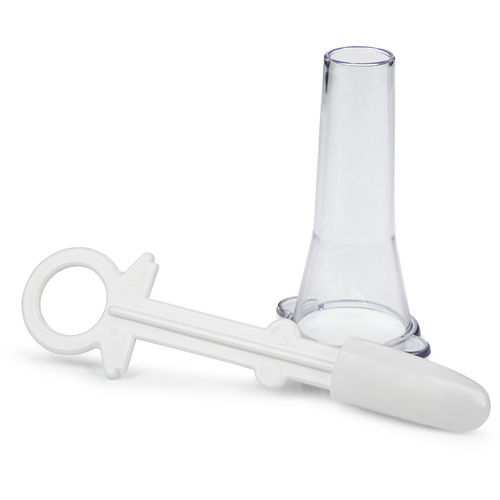Anoscopy: A Comprehensive Guide to Procedure, Uses, and Importance
Anoscopy is a vital medical procedure used to examine the anal canal and rectum. In this comprehensive guide, we delve into the details of anoscopy, its uses, benefits, and what to expect during the procedure.

What is Anoscopy and Why is it Performed?
Anoscopy is a diagnostic procedure that involves the visual examination of the anal canal and lower rectum using a specialized instrument called an anoscope. It is commonly performed to evaluate various conditions, including hemorrhoids, anal fissures, rectal bleeding, and other abnormalities within the anal and rectal areas.
The Significance of Anoscopy in Diagnosis and Treatment
Anoscopy plays a crucial role in the accurate diagnosis and effective management of a wide range of anal and rectal conditions. By providing direct visualization of the affected area, anoscopy enables healthcare professionals to identify issues that may not be apparent through external examination alone. This precision aids in tailoring appropriate treatment plans and interventions for patients.
Identifying Hemorrhoids and Anal Fissures
Anoscopy is particularly valuable in detecting and classifying hemorrhoids (swollen blood vessels in the anal area) and anal fissures (small tears in the anal lining). These conditions can cause discomfort, pain, and rectal bleeding. Anoscopy allows healthcare providers to assess the severity and location of these issues.
Evaluating Rectal Bleeding
Unexplained rectal bleeding requires careful assessment to determine its cause. Anoscopy helps visualize the source of bleeding and assists in differentiating between various potential causes, such as hemorrhoids, fissures, polyps, or more serious conditions like colorectal cancer.
Diagnosing Anal and Rectal Abnormalities
Anoscopy aids in diagnosing a range of anal and rectal abnormalities, including polyps, growths, inflammation, and infections. This diagnostic precision ensures appropriate follow-up care and treatment based on the specific condition identified.
Preparing for Anoscopy: Procedure Steps and What to Expect
Before undergoing anoscopy, it’s helpful to understand the procedure steps and what you can anticipate:
Preparation and Pre-procedure Instructions
Prior to the procedure, your healthcare provider will provide specific instructions. These may include dietary restrictions, bowel preparation, and any necessary hygiene measures. Following these instructions is crucial to ensure a successful and accurate examination.
The Anoscopy Procedure
During the anoscopy procedure, you will be positioned comfortably, usually lying on your side with your knees drawn towards your chest. The anoscope, a slender tube with a light source and magnifying lens, is gently inserted into the anal canal. This allows the healthcare provider to directly visualize the anal and rectal tissues.
Visual Examination and Findings
As the anoscope is advanced, the healthcare provider carefully examines the anal canal and lower rectum. Any abnormalities, such as hemorrhoids, fissures, growths, or inflammation, are noted and may be documented for further analysis.
Post-Anoscopy Care and Follow-Up
After the procedure, you may be given specific post-anoscopy care instructions. These may include:
Resuming Normal Activities
In most cases, you can resume normal activities immediately after the procedure. However, it’s advisable to avoid strenuous activities or heavy lifting for a brief period to allow the anal area to recover.
Monitoring and Reporting
If any discomfort, bleeding, or unusual symptoms occur after anoscopy, it’s essential to promptly inform your healthcare provider. Monitoring and reporting any changes are crucial for ensuring your well-being and addressing any potential complications.
Frequently Asked Questions (FAQs) About Anoscopy
Q1: What is anoscopy, and why is it performed?
A1: Anoscopy is a medical procedure used to examine the anal canal and lower rectum. It’s performed to diagnose and assess conditions like hemorrhoids, fissures, and rectal bleeding.
Q2: Is anoscopy a painful procedure?
A2: Anoscopy is typically well-tolerated and minimally uncomfortable. It may cause a slight pressure sensation during insertion, but discomfort is generally brief.
Q3: How is anoscopy different from a colonoscopy?
A3: Anoscopy focuses on the anal and lower rectal area, while a colonoscopy examines the entire colon and rectum. An anoscope is shorter and used for visualizing the anal canal.
Q4: Is anoscopy safe?
A4: Anoscopy is considered safe when performed by trained healthcare professionals. Potential risks are minimal and include mild discomfort, bleeding, or infection.
Q5: How long does an anoscopy procedure take?
A5: Anoscopy is a relatively quick procedure, often taking only a few minutes. The actual examination time may vary based on findings and the need for additional assessments.
Q6: Will I need anesthesia for anoscopy?
A6: Anesthesia is typically not required for anoscopy due to its minimally invasive nature. Some healthcare providers may use a lubricant or numbing gel for added comfort.
Q7: Can anoscopy detect serious conditions like cancer?
A7: While anoscopy is useful for detecting various anal and rectal conditions, including precancerous lesions, it’s not a primary tool for diagnosing colorectal cancer. Additional tests may be needed.
Q8: What should I tell my healthcare provider before undergoing anoscopy?
A8: Inform your healthcare provider about any medical conditions, allergies, medications, or prior surgeries. Open communication ensures a safe and effective procedure.
Q9: Is there any special preparation needed for anoscopy?
A9: Depending on the specific instructions from your healthcare provider, you may need to follow dietary restrictions, use an enema, or take laxatives for bowel preparation.
Q10: When will I receive the results of my anoscopy?
A10: Your healthcare provider will discuss the findings and results of the anoscopy with you shortly after the procedure. They will also provide guidance on any necessary follow-up steps.
Conclusion
Anoscopy is a valuable diagnostic tool that provides healthcare professionals with a direct view of the anal canal and rectum. Its significance in identifying and assessing various anal and rectal conditions cannot be overstated. By aiding accurate diagnosis and tailored treatment, anoscopy contributes to improved patient outcomes and digestive health.




